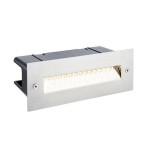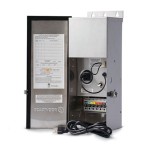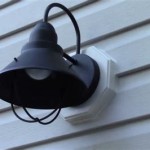How to Take Care of Outdoor Potted Plants in Winter
The transition from autumn to winter presents unique challenges for maintaining the health and vitality of outdoor potted plants. The reduced daylight hours, fluctuating temperatures, and increased precipitation can create a stressful environment, potentially leading to plant damage or even death. Understanding and implementing appropriate winter care strategies is crucial for ensuring that potted plants survive the dormant season and thrive when warmer weather returns.
The specific care requirements for outdoor potted plants in winter depend largely on the plant species, the severity of the winter climate, and the type of pot used. Evergreen plants, for instance, require different care compared to deciduous plants. Plants in terracotta pots are more susceptible to frost damage than those in plastic or resin pots. Therefore, a thorough assessment of individual plant needs and regional weather conditions is the first step in developing an effective winter care plan.
Assessing Plant Hardiness and Preparing for Dormancy
Plant hardiness refers to a plant's ability to withstand cold temperatures. Before winter arrives, it is essential to determine the hardiness zone of each potted plant and compare it to the local hardiness zone. This information is typically available on plant tags or from reputable online sources. Plants that are not hardy enough for the local climate will need extra protection or should be brought indoors.
Preparation for dormancy is another key aspect of winter care. Deciduous plants, which naturally lose their leaves during the winter, require different preparation compared to evergreens. For deciduous plants, remove any dead or diseased foliage to prevent the spread of fungal diseases during the dormant period. Consider pruning back excessive growth to reduce wind resistance and minimize the risk of breakage under heavy snow or ice. Avoid fertilizing plants in late autumn, as this can stimulate new growth that will be susceptible to frost damage. The aim is to encourage plants to enter a period of rest and conserve their energy for the spring.
Evergreen plants, while retaining their foliage, still experience a period of reduced growth during the winter. Their needs are focused on moisture retention and protection from wind burn. Ensure that evergreens are well-hydrated before the onset of freezing temperatures. Anti-desiccant sprays can be applied to evergreen foliage to help reduce moisture loss, particularly in windy locations. These sprays create a protective barrier on the leaves, minimizing water evaporation.
Protecting Plants from Cold Temperatures and Frost
Protecting potted plants from cold temperatures and frost is paramount to their survival. Several methods can be employed, depending on the severity of the cold and the sensitivity of the plant. One common approach is to move potted plants to a sheltered location, such as a garage, shed, or porch. This can provide significant protection from wind, snow, and ice. When relocating plants indoors, gradually acclimate them to the change in temperature and light levels to minimize stress. If indoor storage is not feasible, consider grouping pots together in a protected area and wrapping them with burlap, blankets, or other insulating materials. This creates a microclimate that can help moderate temperature fluctuations and prevent root damage.
Root systems are particularly vulnerable to freezing temperatures, as they are not naturally insulated like the above-ground portions of plants. Protecting the roots is crucial for the plant's survival. Wrap the pots with insulating materials to prevent the soil from freezing solid. In colder climates, consider burying the pots in the ground or placing them inside a larger container filled with mulch or straw. This provides added insulation and helps maintain a more stable soil temperature.
Another factor to consider is the type of pot used. Terracotta pots, while aesthetically pleasing, are porous and can absorb water. When the absorbed water freezes, it can expand and crack the pot. To prevent this, either move terracotta pots to a sheltered location or wrap them thoroughly with insulating materials. Plastic or resin pots are less susceptible to frost damage but still benefit from insulation in extremely cold conditions.
For plants that cannot be moved or easily protected, consider using frost cloths or horticultural fleece to cover them. These lightweight fabrics allow air and moisture to circulate while providing a barrier against frost and wind. Secure the frost cloth around the base of the plant to prevent it from being blown away by the wind. Remove the cloth periodically during warmer days to allow for ventilation and prevent the buildup of condensation.
Managing Watering, Light, and Ventilation
Proper watering is essential during the winter months, but it requires a different approach compared to the growing season. Overwatering can be as detrimental as underwatering, as it can lead to root rot in cold, damp conditions. Reduce the frequency of watering and only water when the soil feels dry to the touch. Check the soil moisture level regularly, as the rate of drying will vary depending on the plant species, the pot size, and the weather conditions. When watering, avoid splashing water on the foliage, as this can increase the risk of fungal diseases. Water early in the day to allow the foliage to dry before nightfall.
Light is another critical factor to consider during the winter. While plants are not actively growing, they still require some light to survive. If plants are moved indoors, place them in a location that receives adequate sunlight, such as near a south-facing window. If natural light is insufficient, consider using grow lights to supplement the light levels. Provide plants with a consistent photoperiod, typically around 8-10 hours of light per day. Artificial lights should be placed at an appropriate distance from the plants to avoid burning the foliage.
Ventilation is also important, especially for plants that are overwintered indoors. Stagnant air can promote the growth of mold and mildew. Ensure that plants are in a well-ventilated area and avoid overcrowding them. Open windows periodically to allow for fresh air circulation, but be careful to protect plants from drafts. If plants are covered with frost cloths, remove the cloths periodically to allow for ventilation and prevent the buildup of condensation.
Snow accumulation on potted plants can present both benefits and drawbacks. A layer of snow can provide insulation and protect plants from extreme cold. However, excessive snow buildup can also weigh down branches and potentially cause breakage. Periodically remove heavy snow from plants to prevent damage. If plants are covered with snow, avoid using salt to melt the snow, as salt can damage the plants and contaminate the soil. Instead, use a shovel or broom to carefully remove the snow.
Monitoring for pests and diseases is crucial throughout the winter. Although plant activity is reduced, pests and diseases can still be present, especially in indoor environments. Inspect plants regularly for signs of infestation, such as aphids, spider mites, or mealybugs. If pests are detected, take action promptly to prevent them from spreading. Use insecticidal soap or horticultural oil to control pests, following the product instructions carefully. Remove any diseased foliage to prevent the spread of fungal diseases. Maintain good air circulation and avoid overwatering to minimize the risk of disease outbreaks.
Outdoor potted plants require careful attention and specific care strategies to survive the challenges of winter weather. By understanding plant hardiness, preparing plants for dormancy, protecting them from cold temperatures and frost, and managing watering, light, and ventilation, it is possible to successfully overwinter potted plants and ensure their healthy return in the spring.
Regular inspection of the plants and the growing environment is also essential. Monitor the soil moisture, observe the foliage for any signs of stress or disease, and make adjustments to the care routine as needed. Being proactive and attentive will increase the likelihood of success in overwintering outdoor potted plants.

Plant Care Winter Is Coming Rerootgardens

How To Keep Outdoor Potted Plants Alive In Winter Ryno Lawn Care Llc

Learn How To Take Care Of Outdoor Potted Plants Over Winter Guides Tips And Tricks

Don T Let Outdoor Container Plants Fall Prey To Winter Here S How Prepare The Seattle Times

How To Protect Potted Plants In Winter

Garden S 10 Genius Ideas To Keep Plants Warm In Winter Gardenista

Protect Pot Plants From Frost In Winter At Gardening Naturally

Outdoor Potted Plants In Winter When And Which To Bring Indoors

Best Winter Plants For Pots 25 Stunning Low Maintenance Growing Family

Outdoor Potted Plants In Winter When And Which To Bring Indoors
Related Posts







